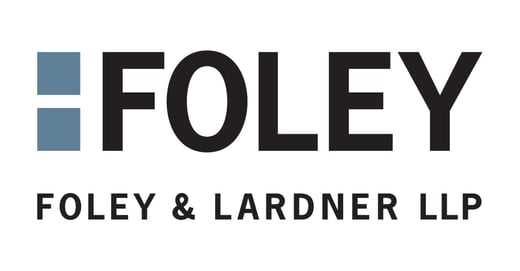Lawyers need contract review tools that augment their valuable skill set and help them move deals to signature by intelligently identifying real issues.
A wide range of contract automation and AI-based review tools have hit the LegalTech market in recent years, and the industry is set to grow at a compound annual growth rate (CAGR) of 6% until 2025. The reason for this huge growth is that automation offers legal professionals a wide range of benefits.
At the heart of this are speed and consistency – the right technology can highlight clauses that represent risk for some reason so the lawyer no longer needs to read the whole contract manually to identify the issues.
But some approaches to automated contract markup can result in a mass of redlines, at least some of which are not helpful or important. In fact, too much automated redlining slows down the contract negotiation process and can cause friction between the parties. No lawyer enjoys receiving a heavily redlined document back, especially when they review the redlines and find that much of it superficial to the point of meaning in question.
Redlining in and of itself is not the end goal: signing a successful deal is. This article explores how a smarter approach to automated contract review helps lawyers get free of endless redlining battles to spend more of their precious time on negotiating the real issues in a contract and getting the deal signed.
More about the redlining process
Redlining—the process of poring over a contract in minute detail to highlight what needs to change, where, and why--has long been considered a core part of the contract review process. Unacceptable language and clauses are flagged and queried using track changes in MS Word, before the ‘redlined’ contract is sent back over to the other party for review. This process continues, with each turn hopefully having fewer redlines than the last, until both parties are happy with the contract.
To date, lawyers have performed this work manually, using their professional judgement to pinpoint the key issues to be addressed. Automated contract markup now offers a time-saving alternative to this process. But the problem is that not all tools are able to understand the legal substance so can serve to slow down the deal, even if they seem to speed up your own review.
There is a danger of getting sidetracked by technology that scans for differences and finds superficial variations in phrasing and differences from templated language, when the meaning of that language is actually the same. This can result in unnecessary work and causes friction by flagging clauses which are acceptable in meaning, but just happen to be worded slightly differently: something a human lawyer would have realised.
The ideal solution would be to combine the speed of automation with the nuanced understanding of humans, so the human lawyer is augmented by the machine. However, some automated contract markup tools can lean too heavily on the machine element.
Fortunately, this better approach now exists.
A smarter approach to contract negotiation
Negotiating a contract requires skill, empathy, and excellent people skills. It’s all about being able to defend your party’s interests, while also identifying common ground, and working out a way to leave the negotiating table with both sides feeling like they have won. It’s a skill, learned over time, that when done properly has a process behind it. That process can be replicated and supported using technology.
The nuance and subtlety required to negotiate a great deal goes far beyond just redlining the legal language.
That’s why the best approach to contract review and negotiation starts with intelligent automation that understands legal context and meaning. Such a platform reads the contract at a deeper level, to understand the obligations and rights created by the clauses, without getting sidetracked by superficial points of language. It then compares the meaning of the clauses using two distinct forms of AI that work together to create a full picture.
This intelligent contract review results in the key issues being highlighted for the user to review, based on the legal implications (risk) they represent. Then, it’s over to the legal team, who can apply their expertise to review the legal issues identified, and make fast and safe judgments on how to proceed with negotiations to get the deal agreed and signed.
Automation brings great benefits when used judiciously; it can cut contract cycles by at least half. It works best, not as a standalone solution, but as a complementary tool that helps to speed up the contract negotiation process: an extra member of the team working under expert human supervision.
How ThoughtRiver enables smarter automated contract review
ThoughtRiver’s contract acceleration platform uses intelligent automation that utilises two distinct forms of AI that work together to identify the true legal issues in a contract, driving an issue-based approach to negotiation. By understanding the legal context and the rights and obligations created, redlining can be focused squarely on the substance, rather than the style, of a contract.
The playbook comparison first compares the rights and obligations against your contracting policies, and then the familiarity feature compares the meaning of the clauses against previously signed contracts or other similar contracts within a given market area. Where appropriate, it automatically suggests potential alternatives, but ultimate control remains with the overseeing lawyer, who reviews the suggestions and makes the decisions on which issues to ignore, which to remediate, and which replacements to make, before sharing it with the counterparty or with internal colleagues for further review. The important part here is the lawyer is being aided and informed by the AI, it is not taking over, it is assisting, it is making the lawyer capable of faster and more thorough reviews.
Lawyers are thus empowered to focus on just the important issues. Ultimately, the legal team gains greater control. The technology enables them to maximise the impact of their valuable expertise and drive the deal to resolution more easily.
Key takeaways
- Too much redlining can slow down the negotiation process and cause friction by focusing on superficial points of language and phrasing, rather than the legal substance.
- An effective contract review process combines intelligent use of automation with the nuanced understanding of human lawyers.
- Lawyers need a platform that understands the rights and obligations created by clauses, not just compare the words.
- ThoughtRiver’s contract acceleration platform takes this approach, using its understanding of legal context to highlight the important issues, before handing the final decisions over to a lawyer who retains control of what happens next.
- This results in greater speed, lower risk, less time spent addressing unimportant issues, and an easier route to resolution.




